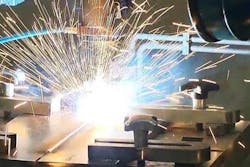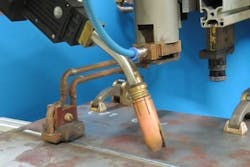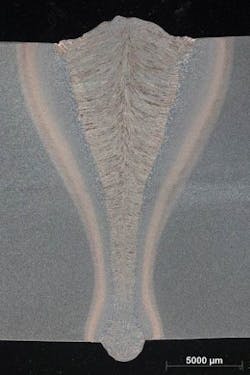Laser hybrid welding process enables reliable joining of high-strength steels
Hannover, Germany - Laser-gas metal arc (GMA) hybrid welding is fast, good for deep welding, and can be used to bridge large gaps. However, for thicker high-strength, fine-grain structural steels, hot cracks and undesired hardness levels can occur in the welding seam. For this reason, an interdisciplinary team of scientists at the Laser Zentrum Hannover e.V. (LZH) and the Leibniz Universität Hannover (LUH) have developed a hybrid welding system with inductive preheating. This process can be used for reliable, high-quality, single-layer welding of high-strength, fine-grain structural steels up to 20mm thick.
To increase the weld seam quality for laser-GMA hybrid welding, the Joining and Cutting of Metals Group at LZH has expanded the process to include integrated, inductive preheating. Directly before the welding process takes place, an induction coil brings energy into a targeted area of the welding seam. Thus, the steel is preheated to the desired temperature, without direct contact. The weld seams are less brittle, fracture strain values are better, and hot cracks can be avoided. With this process, steel sheets can be welded with a single layer and time and material can be significantly saved.
The process was developed for high-strength, fine-grain structural steels with yield strengths from 460 to 690 N/mm2. Applications for the used grades S700MC, X70, and S690QL include crane, pump, pipeline and bridge construction, and in offshore areas. With this process, depending on the sheet thickness, feed rates of 0.75 m/min to 2.5 m/min can be reached.
The basis for the project was close cooperation between the material and process technicians from LZH and the engineers from the civil engineering and electrical engineering fields at the LUH. While the engineers at LZH experimented with welding processes, the Institute for Electrotechnology and the Institute for Steel Construction (both LUH) made simulations of the preheating and welding processes, respectively, and evaluated the welding seams.


